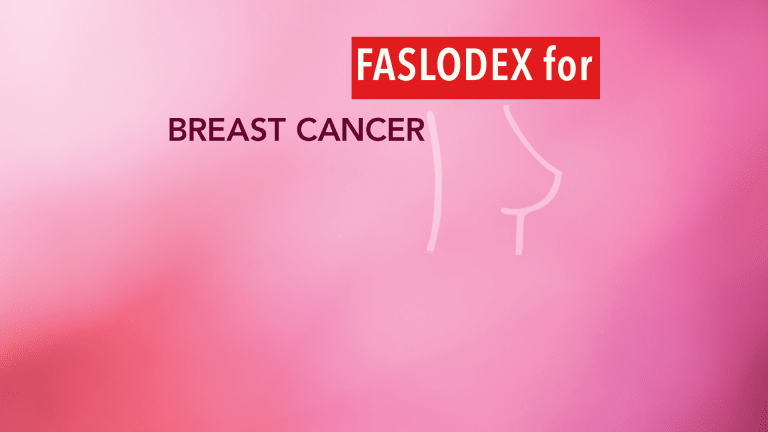Faslodex in Cancer Treatment
Faslodex, also known by its generic name fulvestrant, is a crucial medication in the fight against certain types of breast cancer. It belongs to a class of drugs called estrogen receptor antagonists. This means it works by blocking the effects of estrogen in the body, which is a hormone that can promote the growth of breast cancer cells.
What is Faslodex?

faslodex
Faslodex functions by binding to the estrogen receptors in cancer cells, effectively neutralizing their ability to receive signals from estrogen. This action inhibits the growth of estrogen-dependent cancer cells, an essential factor in treating hormone receptor-positive breast cancer.
Conditions Treated with Faslodex
Faslodex is primarily used in the treatment of hormone receptor-positive breast cancer, specifically in postmenopausal women. It is typically recommended when other hormone therapies have proven ineffective.
Benefits and Efficacy
The efficacy of Faslodex in treating hormone receptor-positive breast cancer is well-documented. Here are some key benefits:
Tumor Suppression:
Faslodex effectively suppresses the growth of estrogen-dependent cancer cells, slowing down or halting the progression of the disease.
Improved Survival Rates:
Studies have shown that Faslodex can lead to increased survival rates in individuals with advanced breast cancer, offering hope and extended quality of life.
Lower Recurrence Risk:
When used as an adjuvant therapy, Faslodex reduces the risk of cancer recurrence, providing long-term protection.
Manageable Side Effects:
While side effects are possible, Faslodex is generally well-tolerated, and its benefits often outweigh any adverse effects.
Administration and Dosage
Faslodex is typically administered via intramuscular injection, most commonly into the buttocks. The frequency of injections may vary, but it is often administered once a month, under the supervision of a healthcare provider.
Side Effects and Safety
While Faslodex is generally well-tolerated, like any medication, it may come with potential side effects. Common side effects include:
Injection site pain or discomfort
Nausea
Headache
Hot flashes
Weakness
Joint pain
Alternative Treatments
While Faslodex is a vital component of breast cancer treatment, it’s essential to be aware of complementary therapies and alternative treatments that may enhance overall well-being. These may include:
Hormone Therapies:
Other hormone therapies such as aromatase inhibitors or targeted therapies like CDK4/6 inhibitors may be considered in combination with Faslodex.
Chemotherapy:
In certain cases, chemotherapy may be recommended alongside Faslodex.
Lifestyle Changes:
A healthy lifestyle, including regular exercise and a balanced diet, can complement medical treatment and improve overall health.
Supportive Therapies:
Counseling, support groups, and integrative therapies like acupuncture or yoga can provide emotional and physical support during treatment.
Future Developments
Cancer research is a dynamic field, and ongoing studies aim to enhance the efficacy and accessibility of Faslodex and similar treatments. Stay informed about the latest developments in breast cancer research, including:
Clinical Trials:
Learn about ongoing clinical trials exploring new treatments and combinations involving Faslodex.
Emerging Therapies:
Discover potential breakthroughs in breast cancer therapies and how they may impact treatment strategies.
Patient Advocacy:
Explore opportunities to engage in patient advocacy and contribute to advancing breast cancer care.
FAQs on the topic of “Faslodex”:
FAQ 1: What is Faslodex used for in cancer treatment?
Answer: Faslodex is primarily used to treat hormone receptor-positive breast cancer, particularly in postmenopausal women.
FAQ 2: How does Faslodex work in the body?
Answer: Faslodex functions by binding to estrogen receptors in cancer cells, blocking their response to estrogen and inhibiting cell growth.
FAQ 3: What are the benefits of Faslodex treatment?
Answer: Faslodex offers benefits such as tumor suppression, increased survival rates, reduced recurrence risk, and manageable side effects in breast cancer care.
FAQ 4: Are there any side effects associated with Faslodex?
Answer: Common side effects of Faslodex may include injection site discomfort, nausea, headache, hot flashes, weakness, and joint pain. Severe side effects are rare but possible.
FAQ 5: How is Faslodex administered to patients?
Answer: Faslodex is typically administered via intramuscular injection, often once a month, under the supervision of a healthcare provider.
FAQ 6: Are there alternative treatments to Faslodex for breast cancer?
Answer: Yes, alternative treatments may include other hormone therapies, chemotherapy, lifestyle changes, and supportive therapies, depending on individual circumstances.
FAQ 7: Can Faslodex be used in combination with other cancer treatments?
Answer: In some cases, Faslodex may be used in combination with other therapies, such as aromatase inhibitors or targeted therapies, to enhance treatment outcomes.
FAQ 8: What should patients expect during Faslodex treatment?
Answer: Patients can expect ongoing monitoring, potential side effects, and regular discussions with their healthcare provider to assess treatment effectiveness.
FAQ 9: Are there ongoing clinical trials involving Faslodex?
Answer: Yes, there are clinical trials exploring new uses and combinations of Faslodex, offering opportunities for patients to participate in cutting-edge research.
FAQ 10: How can patients stay informed about the latest developments in breast cancer care, including Faslodex?
Answer: Patients can stay informed by following reputable cancer support organizations, clinical trials information, and educational breast cancer resources for updates and advocacy opportunities.
Conclusion
In this comprehensive guide, we’ve explored the critical role of Faslodex in the treatment of hormone receptor-positive breast cancer. From its mechanism of action to its benefits, dosage guidelines, and patient experiences, you now have a thorough understanding of this medication.




